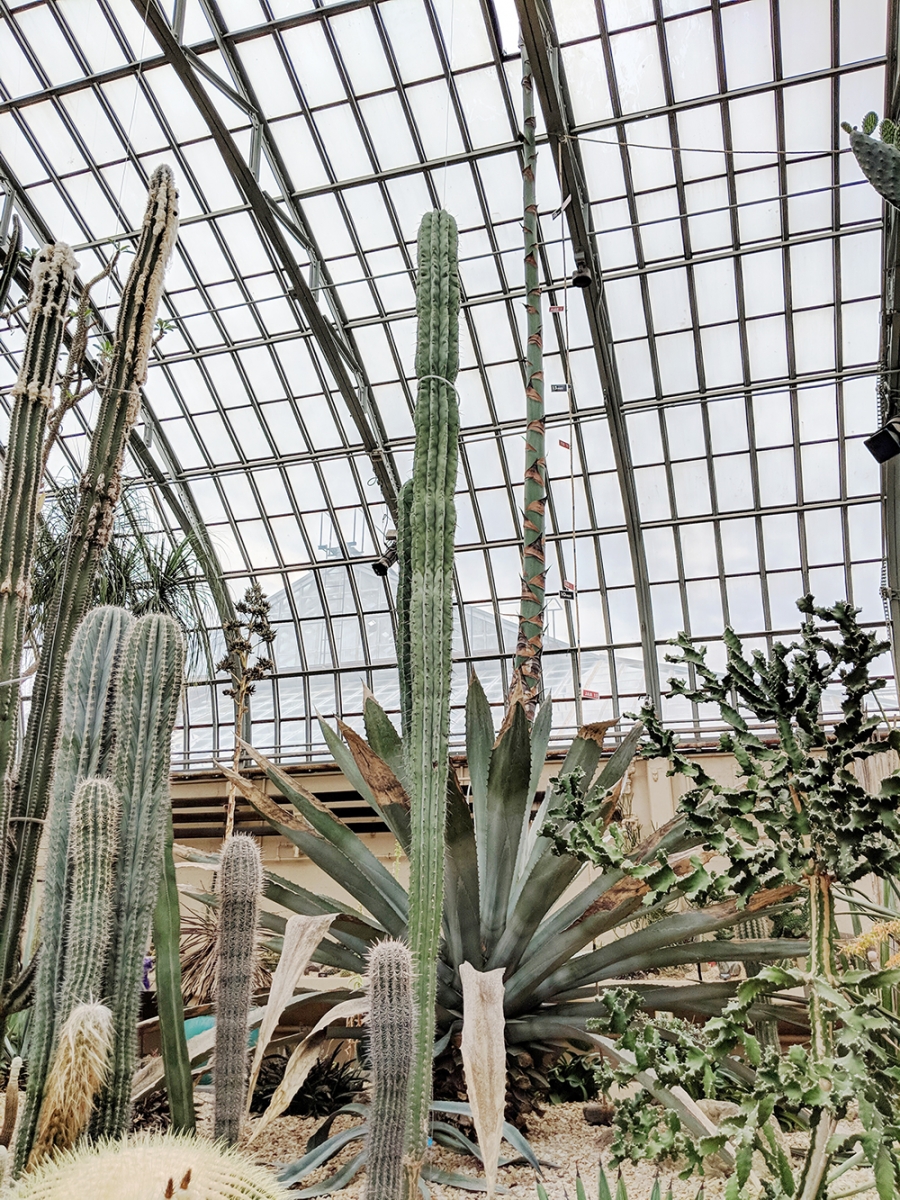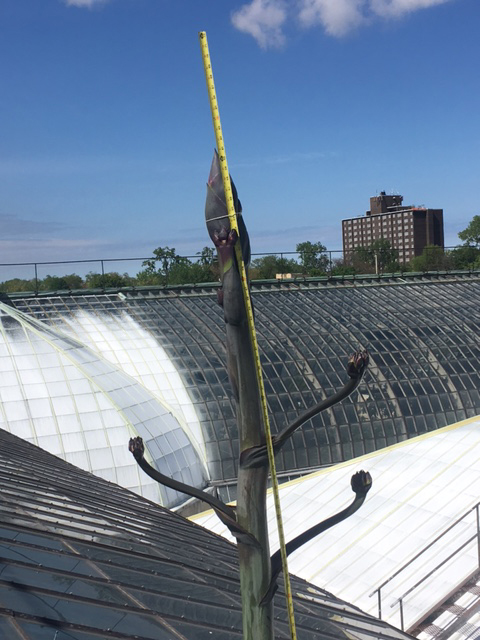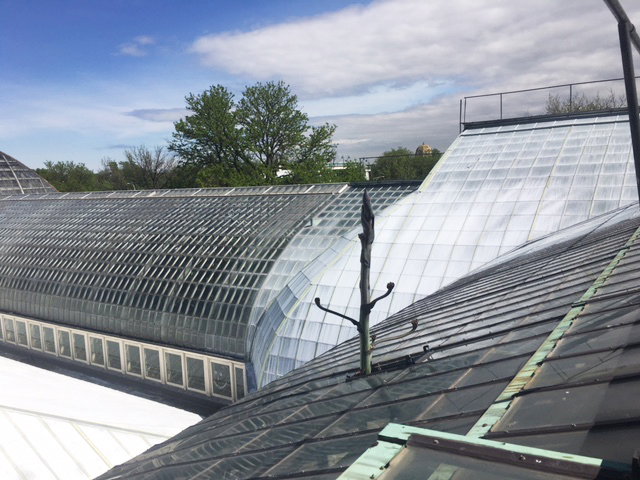An oversized agave plant under glass at Garfield Park Conservatory is putting on the greatest show of its life.
Over the last six months, the plant has experienced an incredible growth spurt. In fact, it's now visible even from the street. The tip of the agave's central stem, an asparagus-like trunk known as a quiote, has grown up through a hole in the hothouse’s roof, reaching for the sky like a fairytale beanstalk.
Its current height: 30 feet, seven inches.
This particular specimen is an Agave americana. Native to Mexico, the succulent's fibers and leaves have historically been used to make textiles and foodstuffs. Before these spiky rosettes die, they bloom just once, sending up an unmissable spike like a ship’s mast, a last hurrah. Although A. americana is also known as a century plant, most only reach age 20 or 25; the Conservatory’s has lived in its Desert House for more than 50 years.
Ray Jorgensen, the garden's horticulturalist, has been keeping a close eye on the agave. He even shimmies up the glass roof every few days to measure its quiote. Jorgensen estimates that it's grown six inches since Thursday. “Once it starts growing there’s no stopping it,” he says, adding that it could be a few more weeks until the branches grow flowers. “The spike could end up being close to 40 feet tall.”

It is unusual to see an agave in captivity flower, partially because most greenhouses do not have room to accommodate its parting display. The roof above the Conservatory’s agave reaches just over 25 feet, and the plant's caretakers removed a glass pane to set it free into the wild. The agave's body alone is about 14 feet wide — nearly twice the size of a typical agave. “It’s a big mama,” Jorgensen says.
But this bloom is also remarkable for its timing. A. americana usually shoot up stalks in the late summer or fall, but this one grew a pronounced spike in January, despite bitter cold temperatures.
The following month, it added a whopping seven inches in a 24-hour period. The sudden growth, Jorgensen suspects, is partially due to slight over-watering in January, which provided the aging agave the necessary turgor pressure to throw up a big ol’ spike.

Unlike the corpse flower — a plant that spends years storing up energy only to bloom for 24 to 36 hours at a time — A. americana will flower over weeks. Delicate yellow-white florets will grow first from its bottom branches, then its uppermost ones, resulting in some 10,000 blossoms. It will be “a longer show than the cherry blossoms,” as Jorgensen puts it — and no doubt just as magnificent.
As the agave slowly dies, its leaves will gradually turn brown and shrivel. In a natural habitat, a mature quiote could stay upright for years, but the Conservatory will intervene long before that. Workers will close up the roof by November, whether that means cutting down the inflorescence (the cluster of flowers) or removing the entire plant.
“It’s valuable real estate,” Jorgensen says. “To be truthful, we don’t plan on purposefully introducing an agave of that size again. As great as it is to have the inflorescence, to wait 50 years when we could have other plants growing in that spot … it’s a tough decision.”
There hasn’t been much discussion about what will become of that majestic quiote, which will weigh between 150 and 200 pounds (although, says Jorgensen, there’s been talk that Rick Bayless is interested in it).
Whatever its fate, it’ll still stand tall through the summer, so make your visit, pay your last respects, and take in the once-in-a-lifetime sight.



